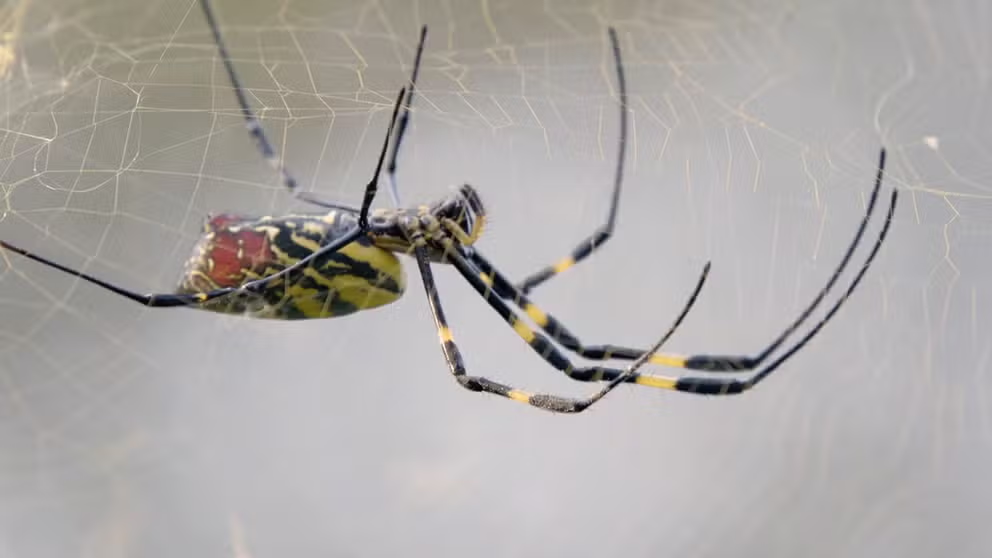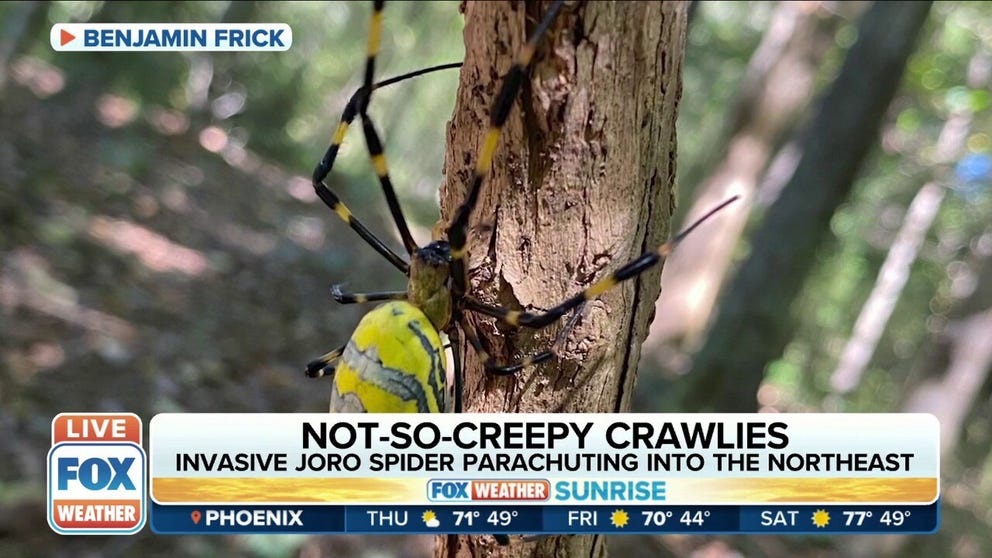Parachuting, palm-sized spiders, aided by cold temps, likely to invade East Coast
New research from the University of Georgia suggests the invasive arachnids could start crawling through most of the Eastern Seaboard of the U.S.
East Asian Joro spider likely to spread beyond Georgia
Joro spiders can survive better in a brief freeze, suggesting they can exist in a colder climatic region than the Southeast.
Don’t burn the property down just yet.
According to researchers, a likely invasion of parachuting spiders, which sounds like something of nightmares, will cause minimal risk to people and are not harmful to humans.
The giant and brightly colored Joro spider is easily noticeable. Native to Southeast Asia and Japan, the eight-legged spawn of the golden orb-weaver was first found in Georgia about nine years ago. It has since spread across the state and into the Southeast.
And new research from the University of Georgia suggests the invasive arachnids could start crawling through most of the Eastern Seaboard of the U.S.
Invasive Joro spider likely to invade much of the East Coast
New research from the University of Georgia suggests the invasive arachnids could start crawling through most of the Eastern Seaboard of the U.S.
HOW TO WATCH FOX WEATHER ON TV
Research scientist Andy Davis and undergraduate Benjamin Frick at the Odum School of Ecology authored the study.
"The perfect conditions for the Joro are pretty much everywhere in the U.S. during the summer months, and since this species is seasonal, it doesn’t really matter how cold it gets so long as their eggs can still survive," Frick said.
Researchers found that the Joro spider has a shorter season than its cousin, indicating it can complete its lifecycle within a narrow period of suitable weather.
Joro spiders have twice as high a metabolism and a 77% higher heart rate when exposed to low temperatures. They can also survive better in a brief freeze, suggesting they can exist in a colder climatic region than the Southeast.
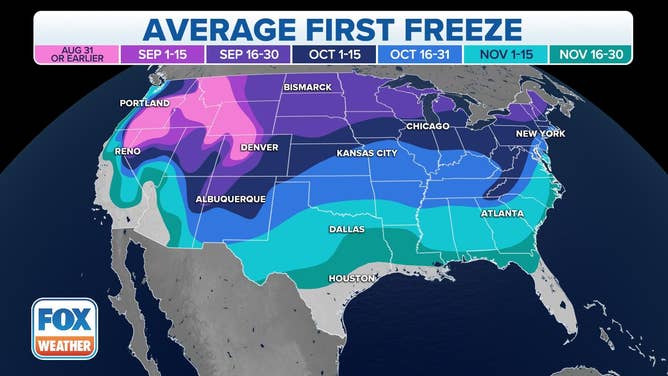
(FOX Weather)
And while cold temperatures themselves aren’t vital to their survival, they merely facilitate the spider’s life cycle.
"Joros are seasonal, and cold temperatures act as a reset for the adults of the species each year," Frick said. "All the adult spiders die off in the winter, which gives their hatchlings a fresh start in the spring."
They grow throughout the summer but are most noticeable in the fall when they reach their adult size of up to 4 inches diameter of their leg span.
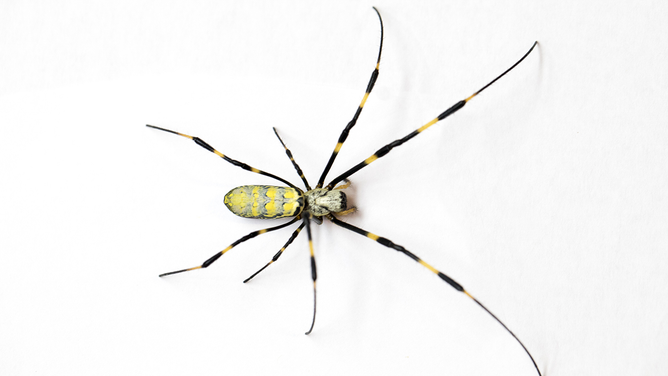
High metabolism, heart rate and the ability to withstand cold may help Joro spiders spread.
(University of Georgia)
However, their greater tolerance to cold weather and increased seasonality allow them to survive farther north in places with a shorter growing season.
"Cold temperatures may foreseeably impart a competitive advantage onto Joros, allowing them to persist longer and operate better at higher latitudes than other native orb weavers, thus increasing their overall reproductive capacity," Frick said.
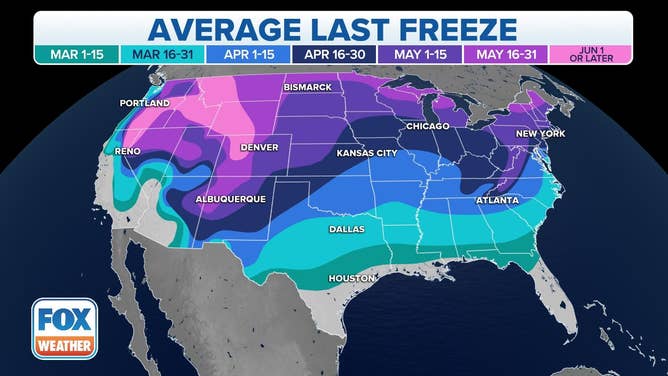
(FOX Weather)
Joro spiders are generalists, meaning that they can survive pretty much anywhere the climate is right.
According to Frick, the native range of the Joro spider in southeastern Asia extends from 35 to 45 degrees latitude, which roughly encompasses the entirety of the continental United States.
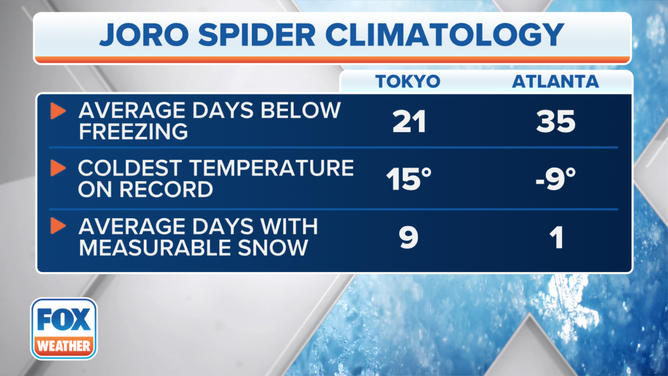
(FOX Weather)
"Weather plays a role for their dispersal in that anywhere within this range is acceptable climate for Joros, this includes the East Coast – an area in which people travel to often," Frick said.
In turn, humans are more likely to transport the spiders along with them.
"They are radiating out from Athens, (Georgia), due to this and in combination with their ballooning behaviors (wind dispersal of spider hatchlings), but areas with more frequent human travel will likely see a greater abundance of spiders," Frick said.
If you ever encounter a Joro spider, don’t be alarmed. They are very skittish.
Scientists said they have a neurotoxin venom used to immobilize their prey; however, it is not very potent and only causes some redness and blistering to people, except those with allergic reactions.
